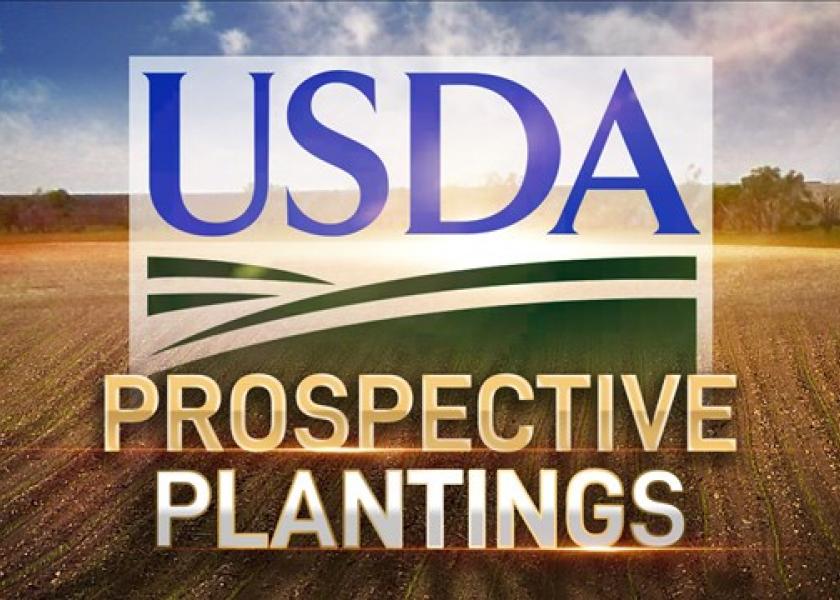Prospective Plantings: Corn Up 4%, Soybeans Down 5%

Corn planted area for all purposes in 2019 is estimated at 92.8 million acres, up 4 percent or 3.66 million acres from last year. Compared with last year, planted acreage is expected to be up or unchanged in 34 of the 48 estimating states.
Soybean planted area for 2019 is estimated at 84.6 million acres, down 5 percent from last year. Compared with last year, planted acreage is down or unchanged in 26 of the 29 estimating states.

All wheat planted area for 2019 is estimated at 45.8 million acres, down 4 percent from 2018. This represents the lowest all wheat planted area on record since records began in 1919. The 2019 winter wheat planted area, at 31.5 million acres, is down 3 percent from last year but up 1 percent from the previous estimate. Of this total, about 22.4 million acres are Hard Red Winter, 5.55 million acres are Soft Red Winter, and 3.55 million acres are White Winter. Area planted to other spring wheat for 2019 is estimated at 12.8 million acres, down 3 percent from 2018. Of this total, about 12.4 million acres are Hard Red Spring wheat. Durum planted area for 2019 is estimated at 1.42 million acres, down 31 percent from the previous year.
All cotton planted area for 2019 is estimated at 13.8 million acres, 2 percent below last year. Upland area is estimated at 13.5 million acres, down 2 percent from 2018. American Pima area is estimated at 255,000 acres, up 2 percent from 2018.
The total acreage for principal crops is estimated at 315.4 million, which is down from 2018’s 319.6 million acres.
View the full 2019 Prospective Plantings report from USDA.
Read More
Read More
Quarterly Grain Stocks: Corn Down 3%, Soybean Up 29%
USDA Reports: Too Much Corn Sinks Markets
Grain Stocks: USDA Finds More Grain Than the Market Expected
Grain Stocks Surprise, Acreage Report Underwhelms
Vaclavik: This Report Is Really Not Constructive for Anything
Read pre-report analysis.







